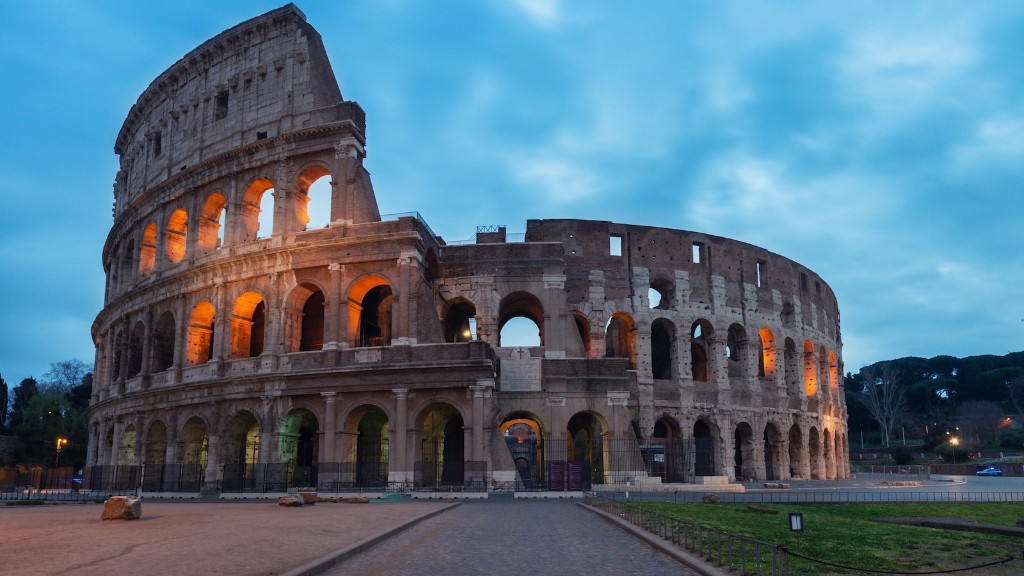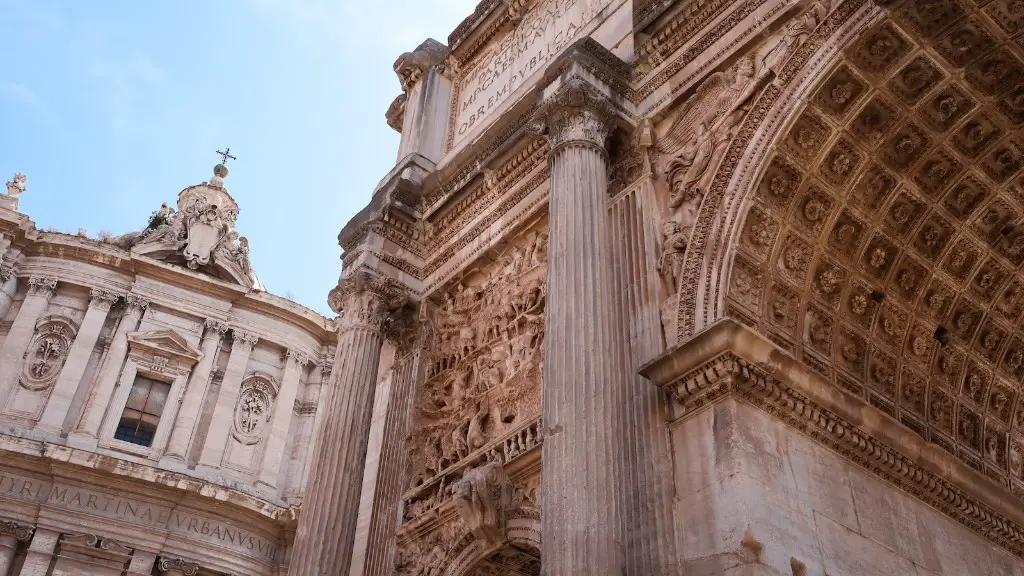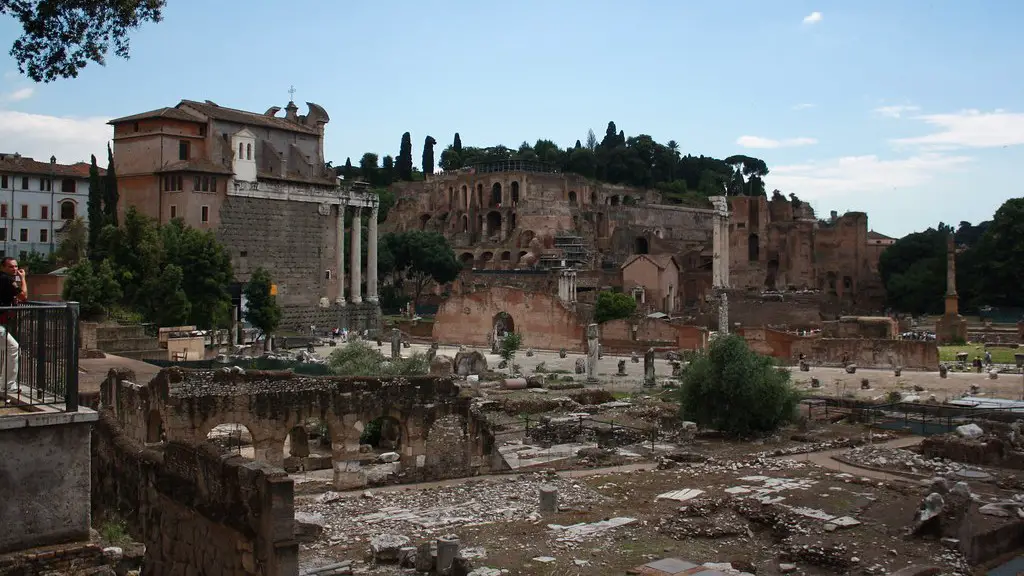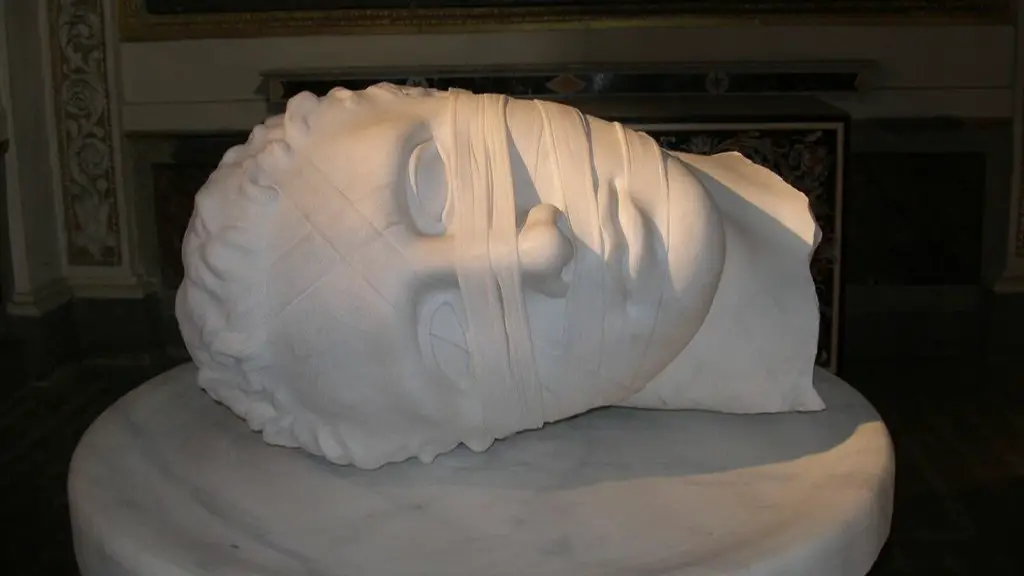The Roman Republic and later the Roman Empire had a profound and lasting impact on the development of European civilization. The Roman Republic was founded in 509 BC, and eventually became an empire with vast territories and tremendous power. Ancient Rome was a major cultural force in Europe for centuries. The Roman Republic and Empire left a lasting legacy in the form of monumental architecture, engineering, literature, law, and governance. Ancient Rome also played a significant role in the spread of Christianity throughout Europe.
Although Rome was not the first complex civilization in Europe, it had the most lasting influence on future European societies. Rome’s meteoric rise to power began in the 8th century BCE, when it emerged as a powerful city-state in central Italy. Over the next several centuries, it slowly began to expand its territory, first by conquering the other city-states in Italy, and then by expanding across the Mediterranean. By the 1st century BCE, the Roman Empire included the entire Mediterranean basin, as well as parts of Europe, Asia, and Africa. This vast empire facilitated significant cultural exchange, which had a profound impact on the development of European civilization.
How did Roman civilization influence world civilization?
The Romans were one of the most advanced civilizations of their time and their innovations in engineering changed the western world. They built long lasting roads that increased trade and helped their armies to move quickly. Many of these roads are still in use today.
Rome’s greatest achievement was the building of an enormous empire. Held together by the military power of one city, in the 2nd century CE the Roman Empire extended throughout northern Africa and western Asia; in Europe it covered all the Mediterranean countries, Spain, Gaul, and southern Britain. The empire was a remarkable feat of engineering and organizational skill, and it was an important factor in the development of Western civilization.
What did ancient Rome influence
Roman law had a significant influence over the modern-day laws of many countries. Legal ideas like trial by jury, civil rights, contracts, personal property, legal wills, and corporations all were influenced by Roman law and the Roman way of looking at things. The Roman system of law was very different from the modern legal system, but many of the concepts that we take for granted today were first developed in Rome.
The fall of the Roman empire in the 5th century AD marked the end of a period of stability and prosperity in Europe. For centuries, the Roman empire had been the largest and most powerful force in the region, providing peace and order through its strong central government. However, by the 5th century, the empire was in decline, and its grip on power was weakening. This led to a period of instability and conflict, as various factions fought for control of the empire. Ultimately, the empire disintegrated, freeing Europe from the rule of a single power.
While the Roman empire provided peace and stability, its central government also tended to stifle experimentation and dissent. Imperial monopolies prevented new ideas and technologies from being developed and spread. This ultimately led to the decline of the empire, as it was unable to adapt to the changing world.
What was Rome’s greatest contribution to civilization?
The Roman Empire was one of the most powerful empires in the world for centuries. They conquered vast territories and left a lasting mark on the world. They were known for their military might, but they also made great contributions to the world in the areas of government, art, and architecture. They were also the birthplace of Christianity.
The Roman Empire was responsible for a number of important inventions and discoveries that have had a lasting impact on the world. Here are 10 of them:
1. Cement: The Roman Empire was responsible for the invention of cement, which is a key ingredient in concrete. Concrete is one of the most widely used building materials in the world.
2. Sanitation: The Roman Empire was responsible for the development of effective sanitation systems, including public toilets and aqueducts. These inventions helped to prevent the spread of disease and improve public health.
3. Roads: The Roman Empire built an extensive network of roads, which helped to facilitate trade and transportation. The roads were also used for military purposes.
4. Social care and welfare: The Roman Empire established a number of institutions to provide social care and welfare, including hospitals and orphanages.
5. Julian Calendar: The Julian Calendar, which was introduced by the Roman Empire, is still used in many parts of the world today.
6. Elements of surgery: The Roman Empire made significant contributions to the field of surgery, including the development of anesthesia and the use of surgical instruments.
7. Elements of the modern legal system: The Roman Empire developed a
What did the Romans give to Europe?
The most obvious impact of the Romans that can still be seen today is their buildings. From military structures such as forts and walls (including the spectacular Hadrian’s Wall) to engineering feats such as baths and aqueducts, the Romans left a lasting legacy in the way we build today.
The Roman Republic was one of the most powerful empires of its time. It conquered Italy, Greece, Spain, the North African coast, much of the Middle East, modern-day France, and even the remote island of Britain. The Republic became an empire in 27 BC, and it lasted for another 400 years.
What is the most important legacy of ancient Rome
The Latin script, also known as the Roman alphabet, is the most widely used alphabet in the world. Derived from the Phoenician alphabet, it was adopted and modified by the Etruscans, and then spread throughout Europe by the Roman Empire. Today, the Latin alphabet is used by billions of people around the globe.
Roman influence can be seen in many modern buildings in terms of design and material. Structures such as sports arenas, spas, supermarkets, and apartment buildings are all modeled on Roman originals. This influence is evident in the use of features such as domes, pillars, arches, and materials such as tiles, bricks, and concrete.
Was Rome the most influential empire?
The rise of Rome to become the most powerful state in the world was a combination of many factors such as military power, political flexibility, economic expansion, and good luck. This expansion changed not only the Mediterranean world but also Rome itself. The rise of Rome was a pivotal moment in history that led to the world we know today.
There’s no doubt that Ancient Rome was one of the most influential civilizations in history. Its impact on the development of law, war, art, literature, architecture, technology and language in the Western world is still evident today.
How did Europe change after Rome fell
After the fall of Rome, a new social and political system called feudalism developed. Strong local lords formed a code of behavior and allegiances which became the foundation of feudal life.
After the fall of the Roman Empire, the Middle Ages began in Western Europe. During this time, Europe remained connected to the rest of the world but encountered many problems, including the Black Death. During the High Middle Ages, European trade began to flourish, and European culture was revived.
What major impacts did Rome have on Western society?
Ancient Rome was one of the most powerful empires in the world for centuries. During that time, they contributed greatly to the development of law, art, literature, war, technology, architecture, religion, and language in the western world. Many of the things we take for granted in our modern societies were first developed or popularized by the Ancient Romans. For example, our modern legal system is based on Roman law, and many of the most famous works of art, literature, and architecture come from Ancient Rome. Even the English language is partly based on Latin, the language of Ancient Rome. So, when you think about it, we owe a lot to the Ancient Romans!
The ancient Romans were a people known for their military, political, and social institutions. They conquered vast amounts of land in Europe and northern Africa, built roads and aqueducts, and spread Latin, their language, far and wide.
What did ancient Rome invent that we still use today
Concrete is a material that is very versatile and can be used for a variety of purposes. Ancient Romans were famous for their use of concrete in their buildings and structures, many of which are still standing today. They invented what we now call hydraulic cement-based concrete, which is a type of concrete that is very strong and durable.
The Roman empire made many contributions to western civilization that are still used today. The Roman alphabet is the alphabet that most western languages use. The division of the year into twelve months is the basis of our calendar. The success of the Christian church was due in part to the support of the Roman empire. The basis of a democratic republic can be traced back to the Roman republic. The Roman legal system was codified by the emperor Justinian and is still used as the basis for many legal systems today.
Conclusion
Ancient Rome played a significant role in shaping European civilization. The Romans were one of the most powerful empires of their time and their influence extended throughout Europe. Roman culture and traditions helped to shape the development of Europe and many of the Western world’s most iconic buildings and landmarks, such as the Colosseum and the Parthenon, are a testament to the Roman empire’s architectural achievements. Additionally, the Romans were responsible for introducing new methods of governance and law, which laid the foundations for modern European democracies. The Latin language, which was the language of the Roman empire, also had a lasting impact on European languages and is still used in many languages today. Finally, the Catholic Church, which was founded by the Romans, is one of the oldest and most influential institutions in Europe.
Ancient Rome was not only influential in the development of European civilization, but also in the development of world civilization. Rome’s political, military, and cultural achievements laid the foundation for the development of Western civilization. The Roman state was the largest and most powerful political entity in the Western world. Rome’s military campaigns extended the empire’s influence throughout Europe and the Mediterranean world. Finally, Roman culture had a profound impact on the development of European civilization. Roman art, literature, philosophy, and architecture shaped the cultural development of Europe for centuries.





